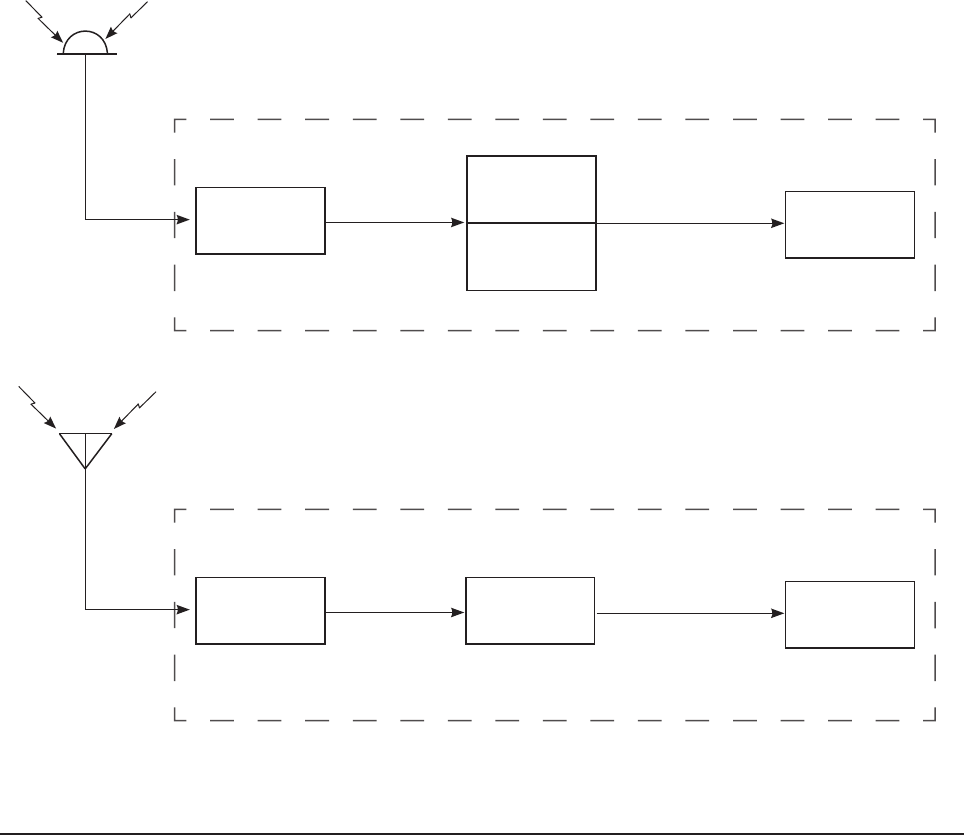
80
MN002000A © 2004 Navman NZ Ltd. All rights reserved. Proprietary information and specifications subject to change without notice.
Occasionally a type 2 message is sent
interspersed among the correction messages,
which provides a secondary correction. This is
done to allow a user to operate with old (up to
two hours) satellite ephemeris and satellite clock
data while the reference station is operating with
most recent data. This correction, called the ‘delta
correction’ is added to the normal correction for
that satellite. The reference station will usually
decode the satellite data before the user does
since it is constantly monitoring the data.
Data Link
The data link, which communicates the corrections
from the reference station to the user receiver,
can take a number of forms and operate at any of
several frequencies. The chief requirement is that
the messages be communicated reliably at a data
rate of at least 50 bps (continuous transmission).
Figure C-5 shows the user data link functions. In
its simplest form, the data link continuously carries
the DGPS data message without interruption at a
constant data rate of at least 50 bps. However, it is
transparent to the GPS receiver whether the data
is transmitted continuously or in bursts, or whether
protocol overhead is added.
For example, each message (or multiple
messages, or any fraction of a message) could
be transmitted as a short burst at 2400 bps, along
with a data link protocol preamble, parity, and even
error correction bits. This would be stripped off at
the receiver end and the differential correction bits
would be stored in the buffer, to be transferred to
the receiver at will. DGPS broadcasts intended for
general public use require that the data link be a
standard, published design.
For non-public use, however, the reference
station, data link and receivers could be part of
an integrated DGPS system. In such a case, the
data might be encrypted to limit the service to
paying customers. The format allows for such
operation. At the minimum rate of 50 bps, there
is considerable robustness in the data link. The
corrections are broadcast frequently enough so
that the loss of as many as three consecutive
corrections can be tolerated and still provide 5 m
accuracy.
GPS sensor
display and
output
measurement
processor
differential data
processor
satellite data
navigation data
position coordinates
GPS receiver
GPS satellite
signals
data link receiver
data formatter
Data link
DGPS data
link
demodulator
Figure C-5 User equipment block diagram


















